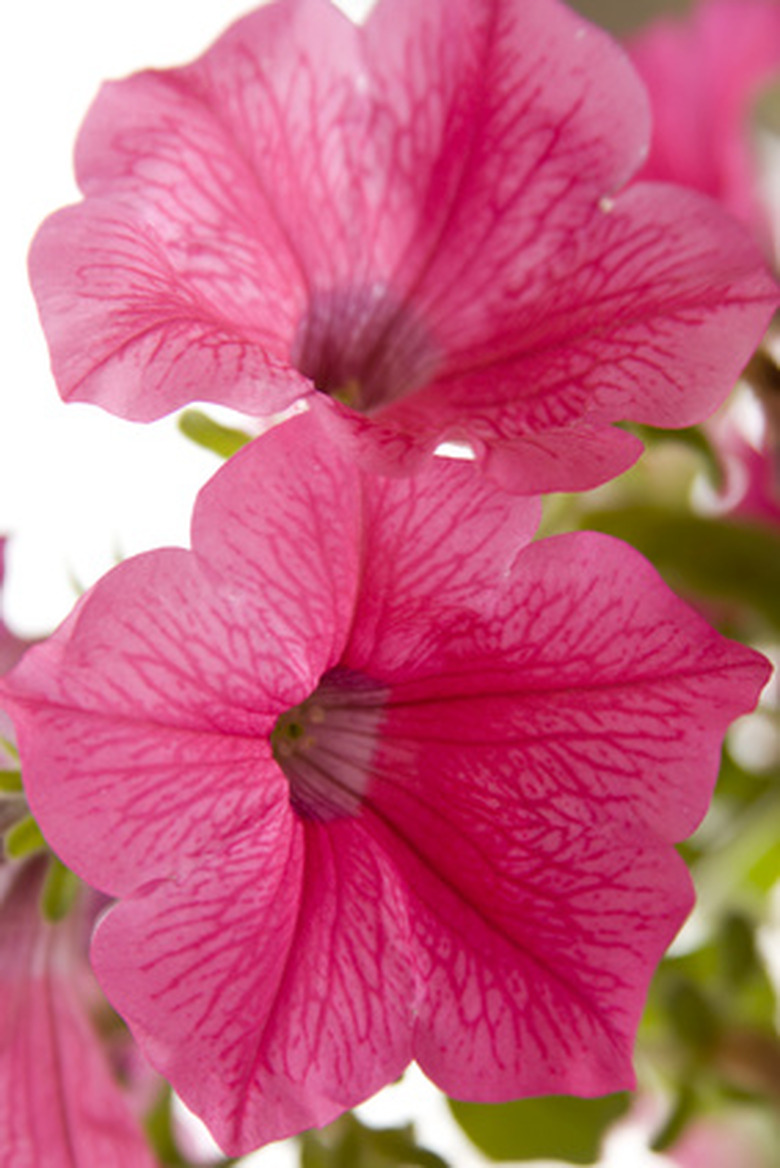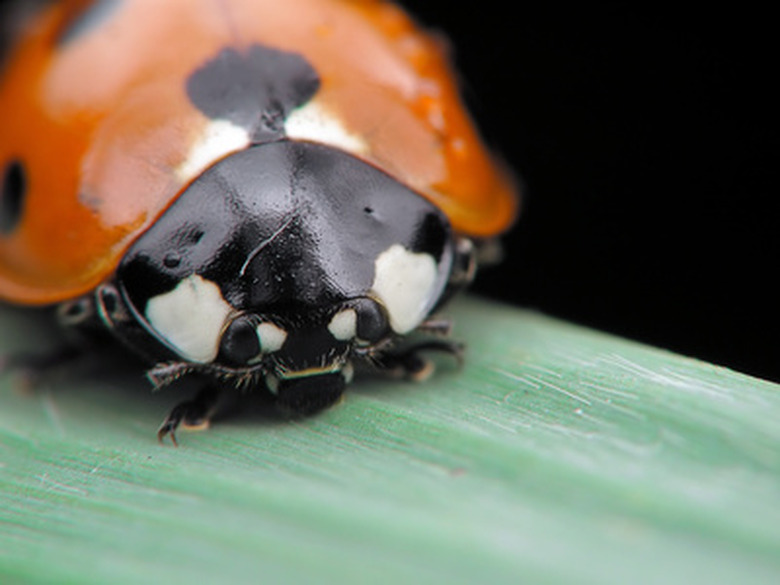How To Get Rid Of Bugs In Petunias
Petunias are one of the most popular flowering annuals across America. The colorful plants are disease free but they do suffer from aphid and cutworm infestations. Cutworms damage new growth by chewing the planet's leaves and stems. A heavy cutworm infestation can result in a death rate of 75 percent of the plants according to University of Rhode Island. Aphids suck the sap from new growth shoots, which can result in the foliage turning yellow and dying.
Cutworm Bug Control
Step 1
Till the flowerbed every fall prior to spring planting. This will unearth cutworm larvae so they can be picked out of the soil. Kill them by dropping them into a pan filled with 5 percent dish detergent and 95 percent water.
- Petunias are one of the most popular flowering annuals across America.
- The colorful plants are disease free but they do suffer from aphid and cutworm infestations.
Step 2
Dig the dirt lightly around the base of the petunias to unearth the cutworms. During the spring and summer, the worms burrow approximately 1 inch below the soil surface to seek safety from the sun and light. Some people squash the cutworms as they are dug up from the soil.
Step 3
Mix 2 percent of the carbaryl and 1 gallon of water in a hand-held pump sprayer. Spray the infected petunias with this solution twice during the growing season.
Step 4
Sprinkle a dust/bait that contains at least 5 percent carbaryl on the soil surface surrounding the petunias at a rate of 1 pound per every 1000 square feet. Repeat every seven days during the growing season.
- Dig the dirt lightly around the base of the petunias to unearth the cutworms.
- Sprinkle a dust/bait that contains at least 5 percent carbaryl on the soil surface surrounding the petunias at a rate of 1 pound per every 1000 square feet.
Step 5
Wrap the base of petunias in aluminum foil, which will prevent the cutworms from reaching them again.
Aphid Control
Step 1
Spray the aphids with water using a garden hose with a spray attachment every three days. Use a soft cloth to gently remove the aphids while spraying with a steady stream of water. The water helps loosen the aphids and the soft cloth easily removes them without hurting the petunia. Repeat every three or four days until the aphids cease appearing on the petunias.
Step 2
Release store bought ladybugs onto the petunias to feed on the aphids. Store the ladybugs in the refrigerator for one to two hours prior to release. The cold will slow down the ladybugs flight response so they do not immediately leave the petunias. Gently sprinkle the ladybugs around the plants. The ladybugs will hang onto the petunias until they warm up and start seeking the aphids.
- Wrap the base of petunias in aluminum foil, which will prevent the cutworms from reaching them again.
- Release store bought ladybugs onto the petunias to feed on the aphids.
Step 3
Mix 1 oz of Neem oil in 1 gallon of water in a hand-held garden pump sprayer and lightly spray the infected petunias. Neem oil can be applied to petunias every three to four days until the aphids are gone.
Things Needed
- Neem oil
- Tiller
- Ladybugs
- Aluminum foil
- Dish detergent
- Carbaryl 5 percent insecticidal spray
- Carbaryl 5 percent dust/bait
- Hand-held garden pump sprayer

